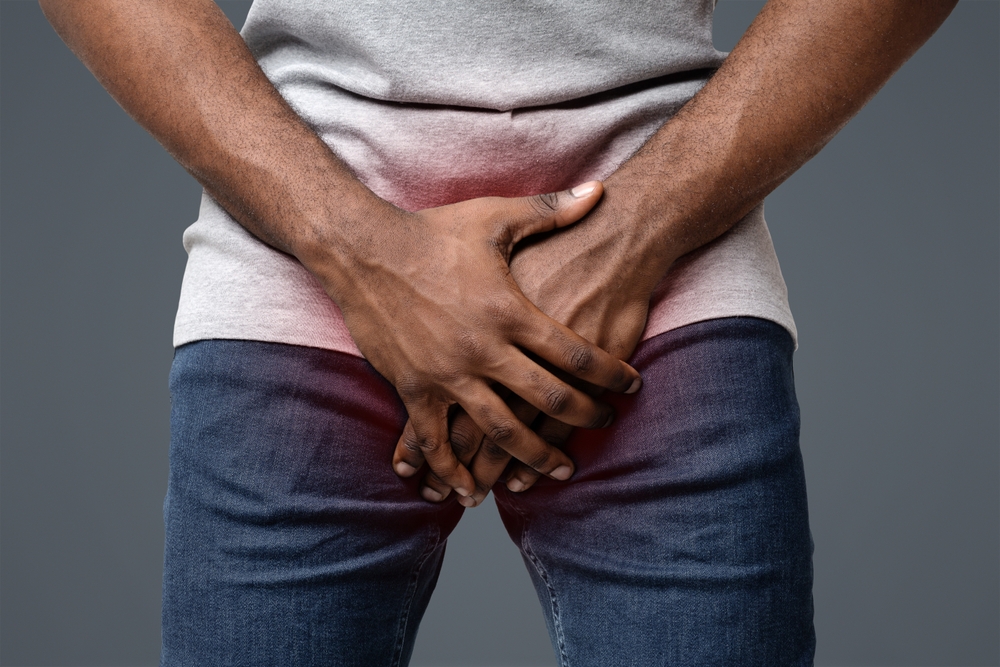That itchy, irritated sensation men occasionally experience but hesitate to discuss might actually be a surprisingly common fungal infection. While yeast infections are typically associated with women, many men remain unaware that they too can develop these uncomfortable overgrowths of Candida fungi on their genital tissue. Despite affecting a significant number of men at some point in their lives, penile yeast infections remain under-discussed due to embarrassment, confusion with other conditions, and the persistent misconception that they exclusively affect females.
This knowledge gap not only leads to unnecessary suffering and delayed treatment but also contributes to relationship tension when partners experience recurring infections. Understanding the causes, symptoms, and treatment options for penile yeast infections can help men identify the condition early, seek appropriate care, and implement preventive measures that promote overall genital health.
What actually causes yeast to overgrow on male anatomy
Penile yeast infections develop through specific biological mechanisms that disrupt the natural balance of microorganisms living on genital tissue. Understanding these processes helps clarify why certain factors increase infection risk.
Candida fungi naturally inhabit many areas of the human body, including the genital region, typically existing in balanced harmony with other microorganisms. Small populations of these fungi normally cause no symptoms, as their growth is kept in check by beneficial bacteria that compete for resources in the same environment. This delicate ecosystem typically maintains itself without problems in healthy individuals with normal immune function.
The progression from harmless colonization to symptomatic infection occurs when conditions change to favor fungal overgrowth. When certain factors disrupt the microbial balance, Candida populations can multiply rapidly, transitioning from a normal component of genital flora to an irritating overgrowth that triggers inflammation and symptoms. This shift doesn’t require new exposure to the fungi, as the organisms responsible for the infection likely already existed on the skin before proliferating to problematic levels.
Moisture and warmth create ideal conditions for yeast proliferation, making the genital area particularly vulnerable. Fungi thrive in warm, humid environments, which explains why infection risk increases with factors that trap moisture against the skin. This biological reality means that lifestyle factors, clothing choices, and hygiene practices significantly influence the likelihood of developing symptoms even when the fungi are already present.
Antibiotic use frequently precedes male yeast infections by eliminating beneficial bacteria that normally help control fungal growth. These medications, while necessary for treating bacterial infections, create collateral damage by killing helpful microorganisms that compete with Candida. Without these natural competitors, yeast populations can expand unchecked, explaining why some men develop symptoms shortly after completing antibiotic treatment for unrelated conditions.
Blood sugar fluctuations create particularly favorable conditions for yeast overgrowth, which explains the higher infection rates among diabetic men. Elevated glucose levels in bodily fluids, including sweat and urine, provide extra nutrition for fungi, essentially fertilizing their growth. This connection highlights why proper diabetes management can significantly reduce infection frequency in affected individuals.
Immune system variations strongly influence susceptibility, with compromised immunity creating opportunities for opportunistic fungal overgrowth. The immune system typically helps regulate microbial populations throughout the body, including on genital tissue. When immunity becomes suppressed through medication, chronic disease, stress, or other factors, this regulatory function diminishes, allowing normally controlled fungi to proliferate beyond their usual boundaries.
The symptoms that distinguish yeast from other conditions
Male yeast infections produce specific symptoms that help differentiate them from other genital conditions, though the similarities sometimes lead to misdiagnosis or confusion. Recognizing these distinctive patterns helps men identify the problem and seek appropriate treatment.
Irritation and itching typically serve as the primary indicators, often described as persistent and increasingly uncomfortable over time. This irritation commonly affects the glans (head of the penis) and occasionally extends to the shaft, creating a distracting discomfort that proves difficult to ignore. While many genital conditions cause itching, yeast-related discomfort often intensifies after bathing or sexual activity, reflecting the fungi’s response to moisture exposure.
Redness and inflammation visibly develop in affected areas, ranging from subtle to quite pronounced depending on infection severity. This inflammation typically presents as patches of reddened skin rather than uniform discoloration, often appearing more intense in skin folds or crevices where moisture accumulates. In uncircumcised men, the area under the foreskin frequently shows the most significant inflammation due to the naturally warmer, more humid environment.
White, thick discharge sometimes appears in moderate to severe infections, providing one of the more distinctive indicators of yeast overgrowth. This discharge typically has a cottage cheese-like consistency and may collect under the foreskin in uncircumcised men or appear in small amounts at the urethral opening. The presence of this characteristic discharge strongly suggests yeast rather than bacterial infection, helping differentiate between conditions requiring different treatments.
Burning sensations, particularly during urination or ejaculation, frequently accompany penile yeast infections. This burning occurs as urine or ejaculate contacts inflamed tissue, temporarily intensifying discomfort. The pattern of pain specifically associated with these activities, rather than constant burning, helps distinguish yeast infections from certain sexually transmitted infections that cause more persistent discomfort.
Small red spots or pustules sometimes develop in more advanced cases, particularly when scratching has damaged the skin surface. These spots differ from the lesions associated with herpes or other conditions by their uniform appearance, lack of blistering, and tendency to appear in clusters across inflamed areas rather than as distinct sores. They typically heal quickly once appropriate treatment begins, without leaving lasting marks.
Tight, uncomfortable foreskin retraction becomes problematic for uncircumcised men with yeast infections. The inflammatory response can create temporary tightening that makes normal retraction difficult or uncomfortable. This symptom, called phimosis when severe, can cause particular concern but typically resolves completely with proper treatment, distinguishing it from structural phimosis requiring medical intervention.
Odor changes, though typically mild compared to bacterial infections, sometimes occur with yeast overgrowth. Rather than the strong, unpleasant smell associated with bacterial conditions, yeast often produces a subtly sweet or bread-like odor that partners might notice before the man himself. This distinctive smell profile adds another identifying characteristic that helps differentiate yeast from other genital conditions with more pronounced odors.
The treatment approaches that actually work
Effective management of penile yeast infections involves specific treatment strategies with varying levels of intervention depending on infection severity, frequency, and underlying causes.
Over-the-counter antifungal creams provide the first-line treatment for most uncomplicated infections. Products containing clotrimazole, miconazole, or tioconazole, widely available without prescription, effectively eliminate excess yeast when applied according to package directions. These topical medications work by disrupting fungal cell membranes, ultimately killing the organisms causing symptoms. Most men experience significant improvement within days of beginning treatment, though completing the full recommended course remains important for preventing recurrence.
Prescription options become necessary for persistent or severe infections that don’t respond adequately to over-the-counter preparations. Fluconazole, an oral antifungal medication, offers systemic treatment that addresses yeast overgrowth throughout the body with a single dose. This approach proves particularly effective for stubborn infections or cases involving multiple body sites simultaneously. Other prescription-strength topical options like econazole or ketoconazole provide more powerful localized treatment when standard creams prove insufficient.
Proper application techniques significantly influence treatment success regardless of which product is selected. Thoroughly cleaning and drying the affected area before applying medication enhances effectiveness by removing excess fungi and ensuring the active ingredients contact the skin properly. For uncircumcised men, carefully pulling back the foreskin to apply medication to all affected areas proves crucial for complete symptom resolution, as hidden areas of infection can lead to rapid recurrence if left untreated.
Treatment duration typically ranges from one to two weeks for most infections, though symptom improvement often begins within days. Continuing treatment for the recommended period even after symptoms resolve helps ensure complete elimination of the overgrowth, reducing recurrence risk. Stopping treatment prematurely when symptoms improve but before the infection has completely cleared represents a common mistake that leads to rapid symptom return.
Partner treatment considerations arise when sexual partners experience their own symptoms or when infections repeatedly recur despite appropriate treatment. While not all yeast infections transmit through sexual contact, synchronous treatment sometimes proves beneficial for preventing reinfection in couples experiencing recurring episodes. Partners showing symptoms definitely require their own appropriate treatment, typically with medications specific to their anatomy and symptom presentation.
Complementary approaches like probiotic supplementation show some evidence for helping restore healthy microbial balance, potentially reducing recurrence risk. Though research specifically in men remains limited, probiotics containing Lactobacillus species may help reestablish the natural bacterial populations that normally help control yeast growth. While unlikely to resolve active infections without medication, these supplements might support long-term prevention when combined with appropriate lifestyle modifications.
Natural remedies like tea tree oil or garlic sometimes receive attention as alternative treatments, but approach these with appropriate caution. Though laboratory studies show these substances have antifungal properties, limited clinical evidence supports their effectiveness for genital yeast infections, and improper use can potentially cause skin irritation. Anyone considering such approaches should discuss them with healthcare providers and never apply undiluted essential oils to sensitive genital tissue.
The prevention strategies every man should know
Preventing penile yeast infections involves specific practical measures that maintain optimal genital health by creating an environment less favorable for fungal overgrowth.
Proper genital hygiene forms the foundation of effective prevention without crossing into excessive cleaning that disrupts natural balance. Washing daily with mild soap and water, particularly after exercise or sexual activity, helps remove excess moisture, sweat, and other substances that can promote fungal growth. However, avoiding harsh soaps, multiple daily washings, or aggressive scrubbing proves equally important, as these can damage protective skin barriers and disrupt beneficial bacterial populations that help control yeast naturally.
Material choices for underwear significantly influence infection risk by affecting moisture levels against the skin. Breathable, natural fabrics like cotton allow better airflow and moisture evaporation compared to synthetic materials that trap heat and humidity. Similarly, loose-fitting underwear and clothing reduce warmth and friction that can exacerbate conditions favorable for yeast proliferation, making these simple wardrobe adjustments particularly effective prevention strategies.
Post-activity hygiene practices deserve special attention, particularly after situations creating prolonged moisture exposure. Changing out of wet swimwear or sweaty workout clothes promptly, thoroughly drying the genital area after swimming or bathing, and changing underwear after heavy perspiration all reduce the extended warm, moist conditions that yeast needs to overgrow. These habits prove especially important during warmer weather or for men with active lifestyles involving frequent perspiration.
Diabetes management represents a crucial prevention strategy for affected individuals, as blood sugar control directly influences yeast infection susceptibility. Maintaining stable glucose levels through appropriate medication, diet, exercise, and regular monitoring significantly reduces infection risk by eliminating the excess sugar that feeds fungal growth. For diabetic men with recurrent infections, improved glycemic control often dramatically reduces episode frequency independent of other preventive measures.
Appropriate antibiotic practices help preserve the beneficial bacteria that naturally control yeast populations. When antibiotics become necessary for other conditions, discussing preventive strategies with healthcare providers might include prophylactic antifungal treatment or probiotic supplementation during the antibiotic course. Additionally, avoiding unnecessary antibiotic use for viral conditions or minor infections helps maintain natural microbial balance that prevents yeast overgrowth.
Sexual practices sometimes influence infection risk, particularly with partners experiencing active yeast infections themselves. Using condoms during treatment periods or when a partner has symptoms reduces direct exposure to concentrations of yeast that might overwhelm the body’s natural regulatory mechanisms. Similarly, ensuring adequate lubrication during sexual activity prevents microtears in skin that can provide entry points for excessive fungal colonization.
Weight management indirectly supports prevention through several mechanisms affecting genital environment. Excess weight, particularly around the abdomen and groin, creates skin folds where moisture accumulates and air circulation diminishes. Additionally, obesity correlates with higher blood sugar levels and altered immune function, both increasing yeast infection vulnerability. Maintaining healthy weight through appropriate diet and regular physical activity helps address these risk factors simultaneously.
When to seek medical attention beyond self-care
While many penile yeast infections respond well to self-treatment, certain situations warrant professional medical evaluation to ensure appropriate care and rule out more serious conditions.
Symptoms persisting beyond one week of appropriate over-the-counter treatment suggest either resistant infection or misdiagnosis requiring professional assessment. Most yeast infections show significant improvement within days of beginning antifungal treatment, with substantial resolution within a week. Continued symptoms despite proper treatment duration raises the possibility of resistant Candida strains requiring prescription-strength medications or alternative diagnoses that present with similar symptoms but require different management approaches.
Recurrent infections, defined as three or more episodes within a year, merit medical evaluation to identify underlying contributing factors. Frequent recurrence often signals unaddressed issues like undiagnosed diabetes, immune dysfunction, or anatomical factors creating persistent vulnerability. Professional assessment can uncover these root causes and develop comprehensive management strategies addressing the underlying problems rather than merely treating each episode as it occurs.
Severe symptoms, particularly extensive inflammation, significant pain, or symptoms interfering with urination, warrant prompt medical attention regardless of suspected cause. These presentations might indicate either unusually aggressive yeast infections requiring stronger treatment or completely different conditions with more serious implications. Professional evaluation ensures appropriate diagnosis and treatment before complications develop or symptoms worsen unnecessarily.
Uncertain diagnosis situations, where symptoms don’t clearly match typical yeast infection patterns, benefit from professional assessment rather than self-diagnosis and treatment. Several sexually transmitted infections, dermatological conditions, and other medical issues can present with symptoms resembling yeast infections, creating potential for mismanagement without proper evaluation. When symptoms seem atypical or diagnosis remains unclear, medical confirmation prevents inappropriate treatment delays for potentially serious conditions.
Underlying health concerns like newly diagnosed diabetes, immune disorders, or unexplained fatigue accompanying genital symptoms deserve comprehensive medical assessment. These combinations sometimes indicate systemic issues requiring broader management beyond localized antifungal treatment. In such cases, the genital symptoms might represent just one manifestation of a more significant health condition requiring comprehensive care.
Partner synchronous symptoms affecting both members of a couple, particularly with repeated reinfection patterns, benefit from medical guidance for coordinated treatment approaches. Healthcare providers can develop synchronized treatment plans addressing both partners’ needs simultaneously, potentially including preventive strategies during vulnerable periods and identifying any contributing relationship factors requiring attention.
The reluctance many men feel about discussing genital symptoms, while understandable, can lead to unnecessary suffering and delayed treatment for manageable conditions. By recognizing penile yeast infections as common, treatable medical issues rather than embarrassing secrets, men can access appropriate care, implement effective prevention strategies, and maintain better genital health throughout life. The open acknowledgment of these infections as routine medical concerns helps normalize appropriate healthcare seeking behavior while reducing the stigma that too often surrounds men’s genital health discussions.















